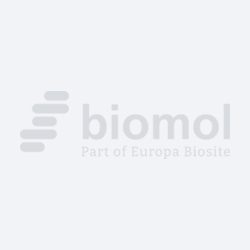Cookie preferences
This website uses cookies, which are necessary for the technical operation of the website and are always set. Other cookies, which increase the comfort when using this website, are used for direct advertising or to facilitate interaction with other websites and social networks, are only set with your consent.
Configuration
Technically required
These cookies are necessary for the basic functions of the shop.
"Allow all cookies" cookie
"Decline all cookies" cookie
CSRF token
Cookie preferences
Currency change
Customer-specific caching
FACT-Finder tracking
Individual prices
Selected shop
Session
Comfort functions
These cookies are used to make the shopping experience even more appealing, for example for the recognition of the visitor.
Note
Show the facebook fanpage in the right blod sidebar
Statistics & Tracking
Affiliate program
Conversion and usertracking via Google Tag Manager
Track device being used

| Item number | Size | Datasheet | Manual | SDS | Delivery time | Quantity | Price |
|---|---|---|---|---|---|---|---|
| IB-IB30302 | 384 wells (1 x 384 format assays) | - |
7 - 11 business days* |
3,954.00€
|
If you have any questions, please use our Contact Form.
You can also order by e-mail: info@biomol.com
Larger quantity required? Request bulk
You can also order by e-mail: info@biomol.com
Larger quantity required? Request bulk
This is an all-inclusive cell-based luciferase reporter assay kit targeting the the Human c-MET /... more
Product information "c-MET/HGFR Reporter Assay System (human)"
This is an all-inclusive cell-based luciferase reporter assay kit targeting the the Human c-MET / Hepatocyte Growth Factor Receptor (c-MET/HGFR). INDIGO's c-MET/HGFR reporter assay utilizes proprietary mammalian cells that have been engineered to provide constitutive expression of the OXTR. In addition to c-MET/HGFR Reporter Cells, this kit provides two optimized media for use during cell culture and in diluting the user's test samples, a reference agonist, Luciferase Detection Reagent, and a cell culture-ready assay plate. The principal application of this assay is in the screening of test samples to quantify any functional activity, either agonist or antagonist, that they may exert against c-MET/HGFR. This kit provides researchers with clear, reproducible results, exceptional cell viability post-thaw, and consistent results lot to lot. Kits must be stored at -80C. Do not store in liquid nitrogen. Note: reporter cells cannot be refrozen or maintained in extended culture. Features Clear, Reproducible Results All-Inclusive Assay Systems Exceptional Cell Viability Post-Thaw Consistent Results Lot to Lot Product Specifications Target Type: Growth Factor Receptor Species: Human Receptor Form: Hybrid Assay Mode: Agonist, Antagonist Kit Components: Human c-MET/HGFR Reporter Cells Cell Recovery Medium (CRM) Compound Screening Medium (CSM) HGF, (ref. agonist, in PBS/0.1%BSA) Detection Substrate Detection Buffer White, sterile, cell-culture ready assay plate Shelf Life: 6 months Shipping Requirements: Dry Ice Storage temperature: -80C. Target Background The MET proto-oncogene encodes the receptor tyrosine kinase (RTK) c-MET, a.k.a Hepatocyte Growth Factor Receptor (HGFR). The c-MET receptor is formed by proteolytic processing of its precursor protein in the post-Golgi compartment into a singlepass, disulfide-linked alpha/beta heterodimer. This cell surface receptor is expressed in cells of many organs, including the liver, pancreas, prostate, kidney, muscle, and bone marrow. The only known ligand for c-MET is Hepatocyte Growth Factor (HGF). HGF acts as a pleiotropic factor and cytokine, promoting cell proliferation, survival, motility, differentiation and morphogenesis. The mature form of HGF consists of an alpha- and beta- chain, which are held together by a disulfide bond. HGF binding to c-MET results in receptor homodimerization and phosphorylation of two tyrosine residues located in the intracellular tyrosine kinase domain. At present, many studies have implicated c-MET in the regulation of cancer cell growth, angiogenesis, invasion and metastasis3. Deregulation and the consequent aberrant signaling of c-MET may occur by different mechanisms including gene amplification, overexpression, activating mutations, and increased ligand-mediated paracrine and autocrine stimulation. It has been established that c-MET is overexpressed in a variety of cancers including Lung, breast, ovary, kidney, colon, thyroid, liver, and gastric carcinomas. Consequently, c-MET and its ligand HGF continue to command much interest as targets for drug development and drug safety screening. Protein function: Receptor tyrosine kinase that transduces signals from the extracellular matrix into the cytoplasm by binding to hepatocyte growth factor/HGF ligand. Regulates many physiological processes including proliferation, scattering, morphogenesis and survival. Ligand binding at the cell surface induces autophosphorylation of MET on its intracellular domain that provides docking sites for downstream signaling molecules. Following activation by ligand, interacts with the PI3-kinase subunit PIK3R1, PLCG1, SRC, GRB2, STAT3 or the adapter GAB1. Recruitment of these downstream effectors by MET leads to the activation of several signaling cascades including the RAS-ERK, PI3 kinase-AKT, or PLCgamma-PKC. The RAS-ERK activation is associated with the morphogenetic effects while PI3K/AKT coordinates prosurvival effects. During embryonic development, MET signaling plays a role in gastrulation, development and migration of muscles and neuronal precursors, angiogenesis and kidney formation. In adults, participates in wound healing as well as organ regeneration and tissue remodeling. Promotes also differentiation and proliferation of hematopoietic cells. May regulate cortical bone osteogenesis. [The UniProt Consortium]
| Keywords: | MET, EC=2.7.10.1, SF receptor, HGF receptor, HGF/SF receptor, Proto-oncogene c-Met, Scatter factor receptor, Tyrosine-protein kinase Met, Hepatocyte growth factor receptor |
| Supplier: | Indigo Biosciences |
| Supplier-Nr: | IB30302 |
Properties
| Application: | Functional activity screening |
| Species reactivity: | human |
| Format: | Solid Phase |
Database Information
| KEGG ID : | K05099 | Matching products |
| UniProt ID : | P08581 | Matching products |
| Gene ID : | GeneID 4233 | Matching products |
Handling & Safety
| Storage: | -80°C |
| Shipping: | -80°C (International: -80°C) |
Caution
Our products are for laboratory research use only: Not for administration to humans!
Our products are for laboratory research use only: Not for administration to humans!
Information about the product reference will follow.
more
You will get a certificate here
Viewed

